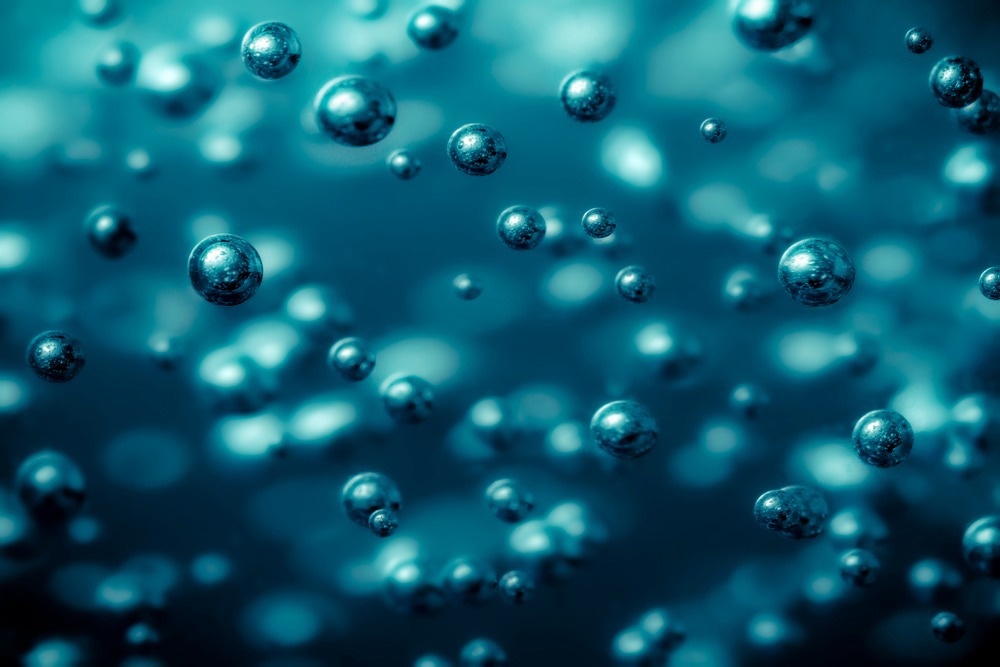Scientists from Germany have reported the development of a novel direct-coating method for the fabrication of membrane-electrode assembly applications. Their findings have appeared in the journal Advanced Sustainable Systems.

Study: Toward Scalable Production: Catalyst-Coated Membranes (CCMs) for Anion-Exchange Membrane Water Electrolysis via Direct Bar Coating. Image Credit: remotevfx.com/Shutterstock.com
Background to the Research
The effects of anthropogenic actions on climate change and the exploitation of non-renewable, carbon-emitting fossil fuel resources have facilitated the urgent need for alternative clean technologies to provide energy and fuel.
Amongst the various green technologies currently being explored, water electrolysis has emerged as a low-cost and efficient approach for producing green hydrogen that can meet the demands of energy, industry, and the transportation sector. Compared to other types of hydrogen, such as grey hydrogen from natural gas, green hydrogen produced from renewable energy sources holds the potential to fully decarbonize industrial sectors.
One technology that has piqued the interest of researchers in recent years is the anion-exchange membrane, which can use non-noble metal catalysts and allows operation in alkaline environments. Moreover, these membranes also have beneficial polymer electrolyte electrolysis properties, including high current densities.
Decal transfer is used to fabricate conventional proton exchange membrane electrolyzers and coat them with catalysts. This process involves forming a catalytic layer on an inert sheet, and using thermal pressing, the catalyst coating is transferred to the membrane.
However, due to their relatively high glass transition points, polyarylene-based ionomers cannot be prepared by thermal decal processes. These materials are typically used in anion-exchange membranes.
To overcome the issues with fabricating anion-exchange membranes, direct catalytic coating can be employed. This approach has also proven attractive for proton-exchange membranes due to reduced processing steps. There are some key issues, however, such as defects in membrane catalytic layers due to solvent absorption and problems in drying steps.
Laboratory scale studies have demonstrated spray coating, but on a commercial scale, this method may be ineffectual and suffer from cost-effectiveness challenges due to the need for large amounts of solvent and low deposition rates. Catalyst-coated substrates could overcome these issues, wherein the porous transport layer is coated with catalysts instead of the membrane itself.
The Study
Currently, however, the method of direct catalytic coating using catalyst-coated substrates faces some technical challenges, such as loss of catalytic material, a lack of a protective layer on the membrane itself, and problems with high interface resistance.
To overcome these critical issues which hinder the commercial-scale potential of anion-exchange membranes prepared by this process, the authors behind the new paper in Advanced Sustainable Systems have demonstrated a novel, improved approach.
The approach used by the authors involves direct bar coating to deposit catalyst layers. The use of a backing foil with adhesive properties prevents any deformation during the coating process. The proposed method is a simple and scalable one and is suited for mass production processes such as roll-to-roll methods.
Furthermore, the loading of catalysts onto membranes is easily controllable, with a linear correlation with wet film thickness demonstrated by the authors. The bar coating method produced catalyst-coated membranes with improved performance at higher current densities. High-frequency resistance in monolithic cast membranes was lower than previously reported methods.
The reported stability and performance of the catalyst-coated membranes produced by the proposed bar coating method was extremely favorable. The reported efficiency due to reduced resistance was high, and amongst the top reported IV curve range.
Electrochemical measurements, X-ray fluorescence microscopy, and scanning electron microscopy were employed in the paper to analyze the bar coating method and the performance and properties of the produced anion-exchange membranes. The paper was supported by funding from Germany’s Federal Ministry of Education and Research.
In Summary
Green hydrogen provides the possibility of complete decarbonization for several key industries, such as transportation and industrial chemical production. The need for reliable and efficient catalyst coating methods for the fabrication of defect-free membranes for water electrolysis technologies to synthesize green hydrogen is a key research area in renewable energy at the moment.
Overall, the proposed method presented in the research is a simple and cost-effective one, which is highly efficient and produces catalyst-coated anion-exchange membranes with outstanding performance. This reported performance was significantly better than spray-coated membranes.
While key challenges still persist in the research area, the novel fabrication method reported in the paper could help to overcome current issues, providing a route toward commercial-scale catalyst-coated anion-exchange and proton-exchange membranes that outperform previous technologies.
Reference
Koch, S et al. (2022) Toward Scalable Production: Catalyst-Coated Membranes (CCMs) for Anion-Exchange Membrane Water Electrolysis via Direct Bar Coating Advanced Sustainable Systems [online] onlinelibrary.wiley.com. Available at:
Disclaimer: The views expressed here are those of the author expressed in their private capacity and do not necessarily represent the views of AZoM.com Limited T/A AZoNetwork the owner and operator of this website. This disclaimer forms part of the Terms and conditions of use of this website.